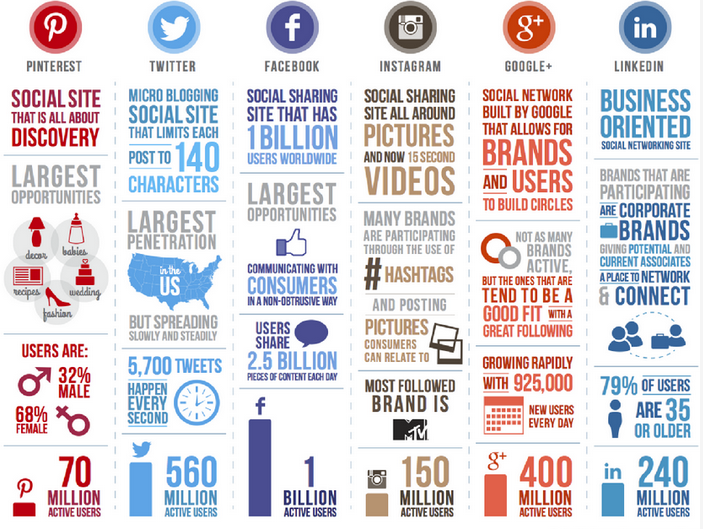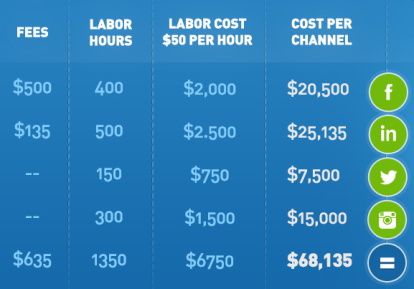How To Calculate Social Media ROI
It’s just not easy to know how many people bought the product after seeing your post and clicking through versus those who went to the store and bought it. How do you prove that the website visitor who bought this product actually came via the tweets you posted? Or that the girl who went to the store and bought the dress actually saw it a day earlier because one of her friends gave a ‘Like’ to the post you published on Facebook? And what is the lifetime value of this costumer? How much did it take you to bring him aboard, and how much revenue did he generate?

Has your work as a Social Media Manager or Community Manager been undermined because it’s hard to actually prove that someone actually bought your company products after seeing them on social media?
Social Media analytics tools are still not precise enough, but I think we’re getting there. I can think of a couple of tricks and tactics that can help you track the results of your social media efforts, help you calculate the ROI and show your employers that what you do is actually very valuable.
ROI (return on investment) acts as proof that your marketing efforts are working. Clients and supervisors need to know whether you’re successful…and so do you! Measuring ROI is important for social media companies, consultants and in-house staff. The main challenge is keeping up with changes in algorithms, implementing new tools that hit the marketplace and proving to your clients that they’re getting the most out of their investment in you.
Here are five steps for your ROI measurement strategy.
1. Set your Social Media goals
Everything depends on your goals. ROI can be measured by a variety of means: customer acquisition, lead generation, clicks, revenue, contest entries, etc. Reach, traffic, leads, customers and conversion rate are all good metrics to measure by. You should quantify what you’re aiming at and preset your performance targets. If the desired business outcome is related to customer acquisition or demand generation, your performance targets for the program may consist of a certain number of inquiries, appointments or even quote requests.
2. Determine the right platforms
Find where your audience is and target these social media platforms. Some fan bases are primarily on Twitter, others on Facebook, Pinterest or Instagram. When determining your target market, you must figure out who they are, what platforms they prefer and how much time they spend there. Then you can figure out which platforms are the right fit; for example, it makes no sense to promote financial services on Pinterest. Below you can see infographics that will give you an idea of where to find your audience.

3. Track your campaigns
Methods for tracking conversions vary depending on the social platform you’re using, IT system, conversion goals and campaign budget. If you’re using a third party tool, it should be able to provide tracking details and results for you.
Another option is to ask your Analytics Department to set up such a tool for you (though probably a simplified version). However, Google Analytics and built-in trackers on many social media platforms should cover most situations, and there are a lot of great apps with sophisticated tracking. The top 5 social media metrics that are normally used for tracking are Reach, Traffic, Leads, Customers and Conversion Rate.
4. Assign monetary value to each conversion
Generally, there are 2 methods to help you determine the value of each customer you bring on board:
a) Using historical data. If you know the lifetime value (LTV) of each customer, it’s easy to backtrack for conversion value. For example, if your average lifetime customer value is $200, and you know that 1 in 20 people who sees your video becomes a customer, then the cost of getting a visitor to view the video is $10 ($200/20 people).
b) Guesstimating. If you don’t have historical data, make use of common sense and experience. For example, a trustworthy person promises you 1000 sign ups to your newsletter. How much would you be willing to pay per sign up? Use that value. You can revise it later when you have hard data.
5. Measure total benefits by channel
Collect incoming traffic data and conversion numbers by site from your analytics tool. Then create a spreadsheet that correlates that data to the total monetary value of those conversions.

6. Determine total costs
Add up promotional account fees, labor costs, and sundry costs by social media channel.

7. Review results and make improvements
ROI =(Benefits-Costsx100)/Costs
Use the data from steps 5 and 6 to calculate the ROI per social media channel. Once you have calculated your ROI, you can review the results of your marketing to see what works and what doesn’t. If you did paid advertising, that’s important to measure as well, because it relates to a specific spend.
Now, get to tracking!

